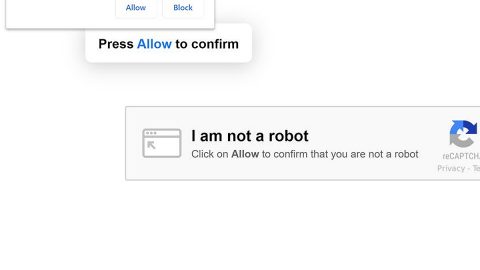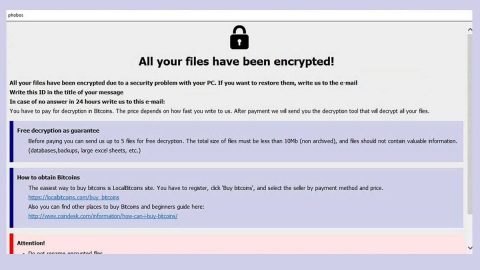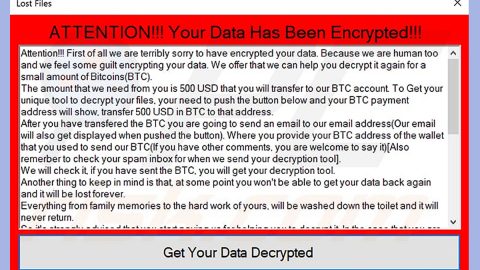What is AcroWare Cryptolocker ransomware? And how does it execute its attack?
AcroWare Cryptolocker is yet another not so typical crypto-virus as it also locks the screen of the infected computer and appears to encrypt files though it isn’t really proven if this threat has the ability to encrypt files yet.
Once it invades a computer system, it drops the following malicious payload:
SHA-256: f9efcfc5328e6502cbbbff752a940ac221e437d8732052fc265618f6a6ad72ae
Name:Advanced Ransi.exe
Size:710.5 KB
After it drops its malicious payload, it will modify the Windows Registry by changing some values and creating some registry entries in order to allow itself to automatically run on system boot and lock the computer. During this process, it changes the certain aspects of the system such as the screensaver, wallpaper and login screen. After it’s done modifying the computer, it will quickly lock it and display the following message on the screen:
“Your Computer Got Sniped by AcroWare Cryptolocker!
All your Personal Data got encrypted and the decryption key is stored on a hidden
web server, after 72 hours the decryption key will get removed and your personal
data/files are Lost forever. To get the decryption key and save your personal data/files
you have to pay 80 USD/EUR in Bitcoins to this Bitcoin Adress: 1KyU66252TCEWapwufy8quALawySij84
and send an email with your ID(Top Left) and your bitcoin address to this email address:
[email protected] any try of removing this Ransomware will result in an instantly
delete of the Decryption key and all your files!”
Although the message in the locked screen is threatening, you need not to worry as this crypto-malware is less likely to encrypt your files and is only bluffing to get you to pay the ransom demanded. Nevertheless, you must remove this pesky threat from your computer.
How is the malicious payload of AcroWare Cryptolocker ransomware distributed?
The malicious payload of AcroWare Cryptolocker ransomware might be distributed using malicious spam email campaign where crooks attach a seemingly harmless file or a link which could redirect you to download the malicious payload. Thus, before clicking any link or downloading attachment, you better double check the email first. It would also be better if you keep both your system and antivirus programs up-to-date.
Follow the removal guide prepared below to terminate AcroWare Cryptolocker ransomware from your computer.
Step 1: Tap the Ctrl + Alt + Delete keys to open a menu and then expand the Shutdown options which is right next to the power button.
Step 2: After that, tap and hold the Shift key and then click on Restart.
Step 3: And in the Troubleshoot menu that opens, click on the Advanced options and then go to the Startup settings.
Step 4: Click on Restart and tap F4 to select Safe Mode or tap F5 to select Safe Mode with Networking.
Step 5: After your PC has successfully rebooted, tap Ctrl + Shift + Esc to open the Task Manager.

Step 6: Go to the Processes tab and look for any suspicious-looking processes that could be related to AcroWare Cryptolocker ransomware and then end their processes.

Step 7: Exit the Task Manager and open Control Panel by pressing the Windows key + R, then type in appwiz.cpl and then click OK or press Enter.

Step 8: Look for suspicious programs that could be related to AcroWare Cryptolocker ransomware and then uninstall them.

Step 9: Close Control Panel and tap Win + E keys to open File Explorer.
Step 10: Navigate to the following locations and look for the malicious components created by AcroWare Cryptolocker ransomware like “[random].exe” and make sure to delete them all.
- %APPDATA%
- %TEMP%
- %APPDATA%\Microsoft\Windows\Start Menu\Programs\Startup\
- %USERPROFILE%\Downloads
- %USERPROFILE%\Desktop
Step 11: Close the File Explorer.
Before you proceed to the next steps below, make sure that you are tech savvy enough to the point where you know exactly how to use and navigate your computer’s Registry. Keep in mind that any changes you make will highly impact your computer. To save you the trouble and time, you can just use [product-name] this system tool is proven to be safe and excellent enough that hackers won’t be able to hack into it. But if you can manage Windows Registry well, then, by all means, go on to the next steps.
Step 12: Tap Win + R to open Run and then type in regedit in the field and tap enter to pull up Windows Registry.

Step 13: Navigate to the listed paths below and look for the registry keys and sub-keys created by AcroWare Cryptolocker ransomware.
- HKEY_CURRENT_USER\Control Panel\Desktop\
- HKEY_USERS\.DEFAULT\Control Panel\Desktop\
- HKEY_LOCAL_MACHINE\Software\Microsoft\Windows\CurrentVersion\Run
- HKEY_CURRENT_USER\Software\Microsoft\Windows\CurrentVersion\Run
- HKEY_LOCAL_MACHINE\Software\Microsoft\Windows\CurrentVersion\RunOnce
- HKEY_CURRENT_USER\Software\Microsoft\Windows\CurrentVersion\RunOnce
Step 14: Delete the registry keys and sub-keys created by AcroWare Cryptolocker ransomware.
Step 15: Close the Registry Editor and empty the contents of the Recycle Bin.
If ever your files got encrypted, recover them using their Shadow Volume copies
Restoring your encrypted files using Windows’ Previous Versions feature will only be effective if AcroWare Cryptolocker ransomware hasn’t deleted the shadow copies of your files. But still, this is one of the best and free methods there is, so it’s definitely worth a shot.
To restore the encrypted file, right-click on it and select Properties, a new window will pop-up, then proceed to Previous Versions. It will load the file’s previous version before it was modified. After it loads, select any of the previous versions displayed on the list like the one in the illustration below. And then click the Restore button.

To ensure the removal of AcroWare Cryptolocker ransomware from your system including the malicious components it has created on your system, follow the advanced steps below.
Perform a full system scan using [product-code]. To do so, follow these steps:
- Turn on your computer. If it’s already on, you have to reboot
- After that, the BIOS screen will be displayed, but if Windows pops up instead, reboot your computer and try again. Once you’re on the BIOS screen, repeat pressing F8, by doing so the Advanced Option shows up.
- To navigate the Advanced Option use the arrow keys and select Safe Mode with Networking then hit
- Windows will now load the SafeMode with Networking.
- Press and hold both R key and Windows key.
- If done correctly, the Windows Run Box will show up.
- Type in the URL address, [product-url] in the Run dialog box and then tap Enter or click OK.
- After that, it will download the program. Wait for the download to finish and then open the launcher to install the program.
- Once the installation process is completed, run [product-code] to perform a full system scan.
- After the scan is completed click the “Fix, Clean & Optimize Now”button.















